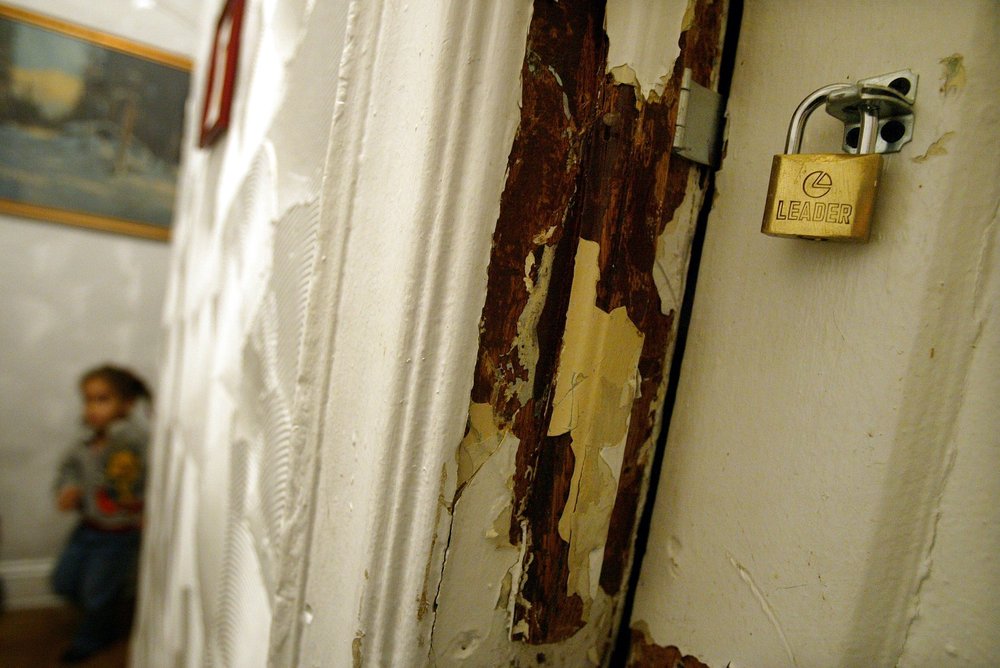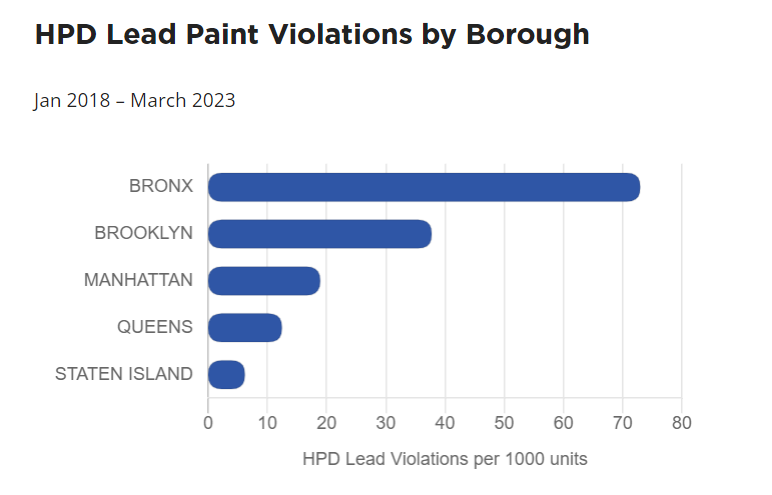Stronger rules against lead paint could be coming soon to NYC
July 15, 2023, 9:01 a.m.
The passage of two City Council bills alongside a federal policy proposal will increase transparency and decrease lead poisoning, advocates said.

New York City could soon have to perform more thorough lead paint inspections and report on landlords who try to contest their results.
On Thursday, the City Council passed a pair of bills intended to close gaps in the city’s existing lead poisoning prevention policy. Those measures now head to Mayor Eric Adams for his approval or veto.
Federal officials also announced this week that they’re proposing tighter standards for how much lead is considered hazardous in older buildings and child care facilities. The threshold for lead treatment would drop to anything above 0 micrograms of lead per square foot of space on high-touch surfaces like floors and window sills. The change could protect as many as half a million children per year nationwide, the Environmental Protection Agency said in a statement.
Experts and advocates praised the changes and called for more investment in the city’s health and housing departments to reflect their increased workloads.
“We’re applauding this,” said Lonnie Portis of the advocacy group WE ACT for Environmental Justice. “It’s an acknowledgement that there is no safe level of exposure to the dangerous toxin that is lead.”
Lead, a common ingredient in paint up until the late 1970s, is especially dangerous for children. Exposure can lead to irreversible brain damage and lifelong learning problems. Dust from deteriorating lead paint can collect on floors and window sills, where it can be easily ingested by crawling or curious children.
The number of NYC children with elevated lead levels has plummeted by 90% since 2004, when the city began collecting data under the Childhood Lead Poisoning Prevention Act. More than 2,500 NYC children tested positive for elevated blood lead levels in 2021, according to city health department data. Though if one considered the lower limits put in place that year by the Centers for Disease Control and Prevention, the number was closer to 5,100, a Gothamist investigation revealed.
City data shows those children are typically nonwhite and live in lower-income neighborhoods, the data shows. Asian, Black and Latino children accounted for more than 4 of every 5 kids found to have elevated blood levels in 2021, and those living in low-income neighborhoods made up nearly 90%.
Lead testing and inspections also took a hit during the first year of the COVID-19 pandemic, as Gothamist reported. One of the City Council bills would expand the scope of those inspections to include apartment buildings’ common areas as well as the affected child’s residence. Inspectors will have to search for lead paint hazards along the entire path from the building’s entrance to the unit’s front door, including hallways and elevators.
Only one member of the Council’s Committee on Housing and Buildings, David Carr, voted against the measure. His Staten Island district averages just one lead violation for every 1,000 buildings, compared to nearly 1,500 in the Upper Manhattan district that includes Inwood and Washington Heights.
Councilmember Carlina Rivera, who represents Lower Manhattan and is one of the bill’s sponsors, called on city agencies to enforce existing lead laws and staff up to meet the new inspection requirements.

“Enough inspectors to go to these buildings: that’s the commitment we need from the city and from [the Department of Housing Preservation and Development],” she said. “We’re hoping that this bill is the start of a renewed focus.”
The second bill compels the city’s health department to share quarterly data on landlords, including the New York City Housing Authority, who disagree with orders from the city to fix peeling lead paint. Building owners contest fewer than 10% of lead repair orders issued by the health department, assistant commissioner Andrew Faciano told Council Members at a hearing earlier this year. A City Council data tracker states that more than 111,000 lead-based paint violations were issued across the five boroughs between 2018 and March 2023.
The New York Times also reported in 2018 that objections to remediation orders were common in NYCHA buildings. Nearly a quarter of the public housing authority’s 528,000 residents are children, according to data shared by NYCHA. The landlord accountability bill passed unanimously in both the City Council at large and in its health committee.
The EPA proposal could also result in a shift in the city’s lead policy down the road. Under Local Law 66, the city has to follow the federal government’s lead on changing lead standards. So if the federal proposals make it through the public comment period and any subsequent changes, the city will have to alter its lead hazard standards accordingly.
But the shift may take time, said Dr. Morrie Markowitz, director of the lead poisoning prevention and treatment program at the Children’s Hospital at Montefiore. It took New York City five months to adopt the CDC’s newest threshold for elevated blood lead levels, for example.
“They’re moving incrementally to address this problem,” Markowitz said of the city and federal governments, noting that public health is an underfunded area. “But they’re changing, and that’s great.”
Shari Logan, a spokesperson for the health department, noted that the city’s threshold for “acceptable lead dust levels” is 5 micrograms per square foot of floor space, half the current limit set by the EPA.
“We will review the EPA proposed rule,” Logan said of the new upper bound.
Spokespeople for the city’s housing department didn’t return a request for comment.
Portis and his WE ACT colleagues are already looking to their next lead policy goals, which include bills that set a deadline for widespread lead removal and require the city to proactively inspect buildings that are likely to have deteriorating lead paint. He said the work won’t stop until childhood lead exposure is completely eliminated.
“We are trying to get to zero cases,” he said. “We’re trying to end this preventable environmental health issue.”
After 5-month delay, NYC health department adopts new federal rules on childhood lead exposure Adams administration faults state air quality forecasts at heated NYC Council hearing City Council seeks to close loopholes in NYC’s lead poisoning prevention laws